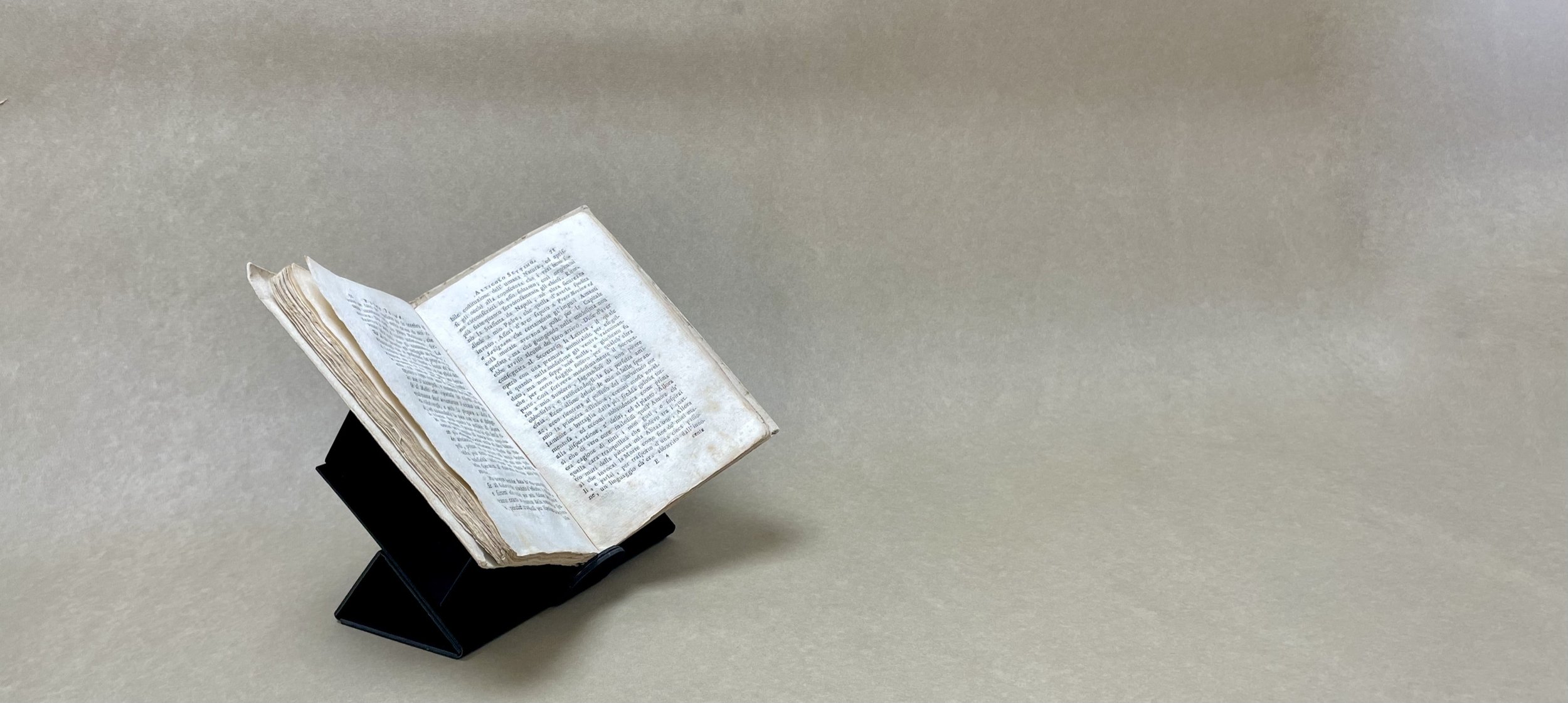
Choosing your Angle
Angles are at the heart of our designs
STILT was born of a preservation requirement to control the opening angle of a book while out on exhibition loan.
Books are made to open, but as their materials age, they lose tolerance for flexibility. Too much flex at any particular pivot point can lead to broken joints and spines and even eventual loss of material.
These pivot points can be severe such as when a book is open at the front or back cover. When a book lies flat on a table and opened to the title page, the front joint of the book can be forced to flex 180º.
When we realized the options available on the market did not give us the angle control required by the lending library, we decided to solve the problem ourselves.
By restricting the opening angle, we restrict the flex on any particular pivot point. By placing the book on a 120º Cradle, we are immediately able to reduce this angle by 60º.
With a 90º Cradle, we have reduced the flex by a full 90º. This is a huge advantage in the preservation of any antiquarian book - just by placing it on a Cradle.
Choosing your Cradle angle
For a binding with stable spine and board flexibility, choose for a wider angle such as 110º or 120º. For a binding with limited flexibility, choose for a narrower angle such as 90º or 100º. A good rule of thumb is: the smaller the book, the tighter the opening angle. We can make bespoke angles upon request.
The choice of angle will determine the overall height and width of your book on its STILT. If you have limited shelf height, width or depth, ask us to help you calculate the final dimensions of your display.
Choosing your Lectern Angle
Our Lecterns come in a choice of 3 angles. 20º is perfect for tabletop reading and exhibition. 35º works perfectly for chest-height shelves and 50º is ideal for eye-level viewing.
To create a dynamic exhibition, we recommend a mix of these three angles. Angle variety creates light reflection that really catches the eye.








